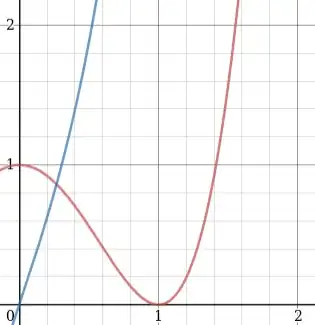Solving $x^4+1-3(x^3+x)=2x^2$ is given as an exercise in Higher Algebra by Hall and Knight. Rearranging for $(x^2-1)^2=3x(x^2+1)$ we can sketch the graph to show there is a root in $(0,1)$ and since $x^4$ outgrows $x^3$ deduce there is a greater root
As useful as this form of the equation looks, it now seems to me it leads nowhere. How can I analytically solve this equation? I am more interested in solutions specific to this form of quartic such as a factorisation or algebra tricks I do not see(as the author would have intended), and less interested in solutions to the general quartic or similar approaches.
